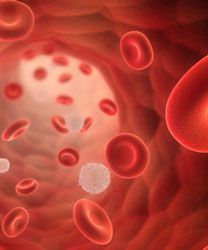Comparison of Induction Therapies Prior to ASCT Favors Novel Quadruple Over Triplet Regimens
Results from the phase III Myeloma XI study showed that patients with myeloma had deeper responses after induction and after allo-stem cell transplantation with outpatient-delivered quadruplet therapy than with sequential immunomodulatory triplet combinations.
myeloma

Results from the phase III Myeloma XI study showed that patients with myeloma had deeper responses after induction and after allo-stem cell transplantation (ASCT) with outpatient-delivered quadruplet therapy than with sequential immunomodulatory triplet combinations.
Findings from the largest myeloma trial of its kind being conducted to date were presented at the 2017 European Hematology Association Congress.
Analysis of the response to initial induction therapy revealed that transplant-eligible patients had the greatest depth of response following quadruplet treatment with carfilzomib/cyclophosphamide/lenalidomide/dexamethasone. Nearly 80% of patients assigned to quadruplet therapy achieved a composite response comprised of very good complete response (VGCR), complete response (CR) and CR without bone marrow (CR w/o BM) compared with 60.8% of patients receiving cyclophosphamide/lenalidomide/dexamethasone, and 52.8% of patients receiving cyclophosphamide/thalidomide/dexamethasone.
The response to initial induction was comparable across subgroups of patients at standard, high, and ultra-high risk.
"Darwinian evolution drives the myeloma and the development of diversity both within and between patients, which suggests that we need multiple agents with different mechanisms of action targeting different clonal population to improve outcomes,” said Charlotte Pawlyn, MB, BChir, PhD, from the Institute of Cancer Research in London. “Triplet combinations containing an immunomodulatory agent, a proteasome inhibitor or both are the current standard of care in Europe and the US. The new generation proteasome inhibitor carfilzomib provides the opportunity to revisit quadruplet induction regimens, since it is selective, and has shown less peripheral neuropathy than bortezomib.”
The Myeloma XI trial aimed to compare induction prior to ASCT with quadruplet combination therapy to immunomodulatory triplet combinations in newly diagnosed transplant eligible myeloma patients. The primary endpoints were progression-free and overall survival, which will be reported later in the year upon data maturation.
Patients (N = 2568) were randomly assigned to 1 of 3 treatment groups:
- quadruplet therapy (n = 526) given in 28 day cycles consisting of carfilzomib (36 mg/m2 IV on days 1-2, 8-9, and 15-16), cyclophosphamide (500 mg on days 1 and 8) lenalidomide (25 mg on days 1-21), and dexamethasone (40 mg on days 1-4, 8-9, and 15-16)
- sequential triplet therapy (n = 1021) with cyclophosphamide (500 mg on days 1 and 8), lenalidomide (25 mg on days 1-21), dexamethasone (40 mg on days 1-4 and 12-15)
- CTD therapy (n = 1021) with cyclophosphamide (500 mg on days 1, 8, and 15) thalidomide (100-200 mg daily), and dexamethasone (40 mg on days 1-4 and 12-15)
All patients received a minimum of 4 cycles of initial induction, and therapy was continued to maximum response.
Patients achieving VGPR/CR proceeded directly to ASCT. Those with partial response/minor response were randomly assigned to sequential CVD (cyclophosphamide 500 mg on days 1, 8, and 15; bortezomib 1.3 mg/m2 on days 1, 4, 8, and 11, dexamethasone 20 mg on days 1, 2, 4, 5, 8, 9, 11, and12) or no treatment. All patients with stable or progressive disease received sequential CVD.
A maintenance randomization between lenalidomide and observation was planned at day 100 post ASCT. Recruitment has now closed and all patients have completed induction therapy.
Median overall age was 59.9 years and 59.8% of patients were male. Most patients had WHO PS 0.
Patients assigned to quadruplet therapy received a median number of 4 treatment. Patients in the other 2 groups both received a median of 5 cycles.
A higher proportion of patients receiving KCRD proceeded directly to ASCT; 70%, 66%, and 65% of patients receiving KCRD, CRD, and CTD underwent ASCT following the initial induction.
“Deeper responses were observed with KCRD that persisted after ASCT,” commented Pawlyn.
Post ASCT, the combined ≥VGPR (CR and CR w/o BM) rates were 92.1% with quadruplet therapy versus 81.8% with triplet therapy and 77.0% with CTD. Across risk subgroups, 90.0% standard-risk patients in the quadruplet group had ≥VGPR, 75% of the triplet group and 74% of the CTD group. That response improved to nearly 99% in for patients in the ultra-high risk group assigned to quadruplet therapy.
The treatments were well tolerated, just 4.8% of patients in the quadruplet group discontinued treatment compared with 5.0% in the triplet group, and 7.8% in the CTD group. Roughly 64% of patients in the quadruplet arm required dose modifications, compared with 55.3% for triplet therapy and 82.2% for CTD.
Some Grade ≥3/4 hematologic toxicities were slightly higher with quadruple induction. Thrombocytopenia rates were 8.1%, 4.5%, and 3.4%; and anemia rates were 10%, 9.6%, and 6.7% with quadruplet, triplet, and CTD therapy, respectively. Grade ≥3 Neutropenia rates were 16.2% with quadruplet therapy, 22.2% with triplet therapy, and 11.6% with CTD.
Grade ≥2 neurological toxicity was greater in the thalidomide-containing regimen, with sensory peripheral neuropathy being reported 2.9%, 3.6%, and 9.5% of patients in the quadruplet, triplet, and CTD cohorts, respectively. There was no statistically significant difference observed in rates of investigator-reported, all grade thromboembolic events between regimens.
Cardiac events including arrhythmias, heart failure, and hypertension occurred in fewer than 3% of patients.
“Induction therapy with KCRD, an outpatient delivered quadruplet regimen, was associated with deeper responses than either immunomodulatory triplet therapy, and was well tolerated,” said Pawlyn. “KCRD induction achieved a high rate of response in newly diagnosed transplant-eligible patients and the depth of response was consistent across all risk groups.”
Pawlyn C, et al. Quadruplet vs sequential triplet induction therapy for myeloma patients: results of the Myeloma XI study. Presented at: 22nd Annual European Hematology Association Congress; June 22-25, 2017; Madrid, Spain. Abstract S407.
<<<